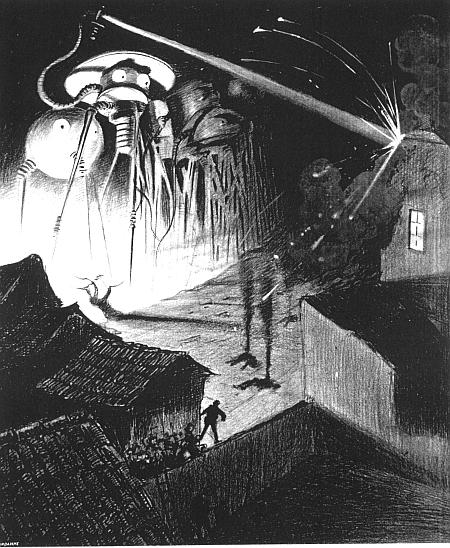The War of the Worlds. Read the blurb on the front cover of this 1910 edition: ‘It is a story which no ordinary reader can possibly put down half finished.’

And that’s because when you’ve half-finished reading it, you’re at a point of suspense that drives you onwards through the chapters. I’ve been reading this book online, having succumbed to the temptation of instant literature. Normally I go to a library and get the physical book to read, which should be possible with any classic. But not this time. To my disappointment, my local libraries don’t have copies of it; it’s either lost, available only as an audio-book or video, or is held in a faraway place. You’d think that libraries in a capital city would ensure they have copies of every classic on their shelves. Of course, I could always go out and buy it but then it would be yet another book to store in my house. Libraries are a gift.
Searching for the centre of The War of the Worlds online, I took the plain text version which is 111 pages long, then went to p. 55 and read these tense lines in the chapter ‘The Exodus from London’ which follows a number of chaos-filled chapters where Martians had invaded the suburbs of London, killing citizens with their Heat-Ray and a black vapour they discharged into the streets:
‘All the railway lines north of the Thames and the South-Eastern people at Cannon Street had been warned by midnight on Sunday, and trains were being filled. People were fighting savagely for standing-room in the carriages even at two o’clock. By three, people were being trampled and crushed even in Bishopsgate Street, a couple of hundred yards or more from Liverpool Street station; revolvers were fired, people stabbed, and the policemen who had been sent to direct the traffic exhausted and infuriated, were breaking the heads of the people they were called out to protect.’
Header: artwork by Alvim Corréa for a 1906 Belgian edition. Courtesy Wikimedia Commons.
*****

